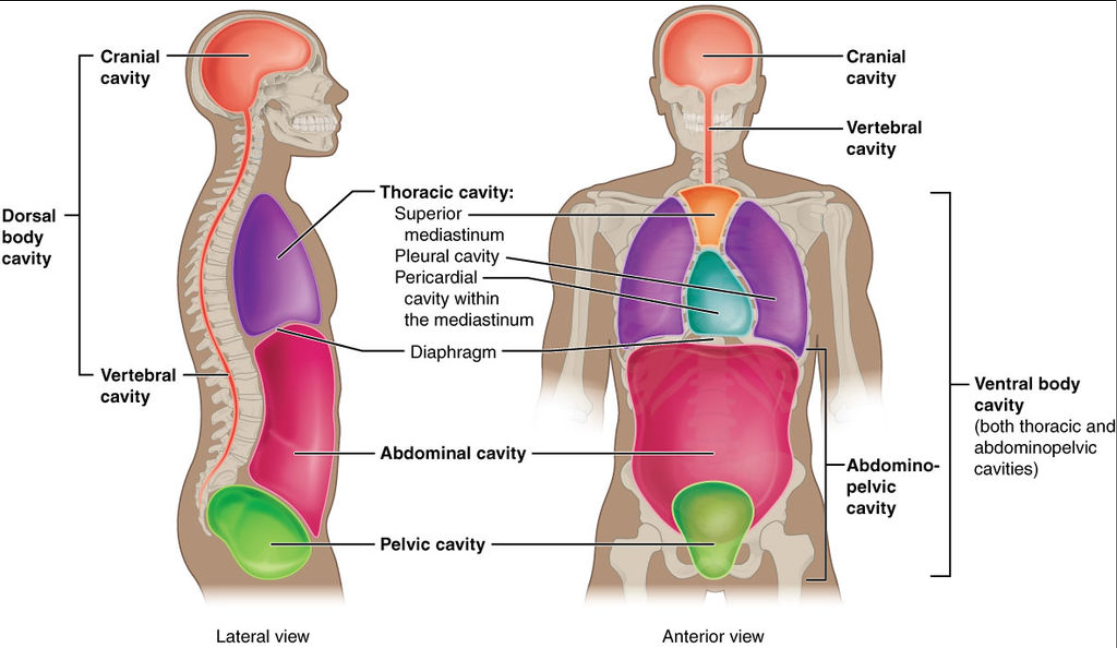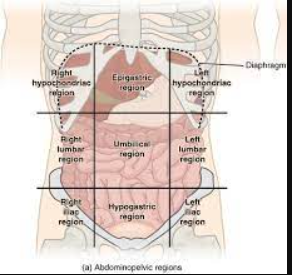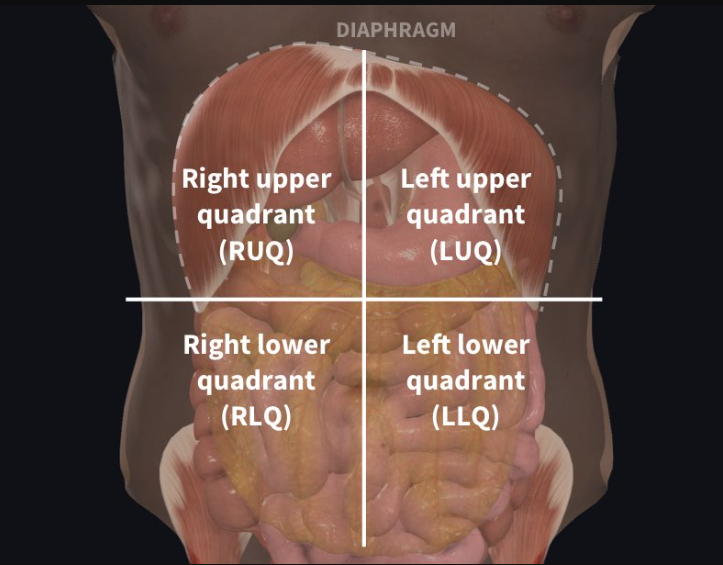All Anatomy
1/266
There's no tags or description
Looks like no tags are added yet.
Name | Mastery | Learn | Test | Matching | Spaced |
|---|
No study sessions yet.
267 Terms
Anatomical Position
Standing upright, legs slightly apart, palms facing up
Prone
Laying face down on the stomach
Supine
Laying face up on the back
Superior
closer to the head; above
Inferior
closer to the feet; below
Ventral, Anterior
Towards to the front of the body
Dorsal, Posterior
Towards to the back of the body
Medial
Towards to the midline of the body
Lateral
Further away from the midline
Proximal
Closet to the attachment (limbs only)
Distal
Furthest from attachment (limbs only)
Superficial
toward or at the body surface
Deep (internal)
away from the body surface; internal
Cranial (cephalic)
Towards the head
Ipsilateral
On the same side
Contralateral
On the opposite side
Abdominal
Region inferior to the thorax (chest) and superior to the pelvic brim of the hip bones
Antebrachial
Forearm (between the elbow and the wrist)
Antecubital
Region anterior to the elbow
Auricular
Visible surface structures of the ear
Axillary
Armpit
Brachial
Arm (the portion of the upper limb between the shoulder and the elbow)
Buccal
Cheek
Calcaneal
Heel of the foot
Carpal
Wrist
Cephalic
Head
Cervical
Neck
Coxal
Hip
Cranial
Skull
Crural
Lower leg (from knee to the ankle)
Deltoid
Shoulder
Digital
Fingers and toes
Dorsal
Back
Facial
Face
Femoral
Thigh
Fibular
Lateral aspect of the leg
Frontal
Forehead
Gluteal
Buttock
Hallux
Big toe
Inguinal
Groin
Lumbar
Lower back
Mammary
Breast
Manus
Hand
Mental
Chin
Nasal
Nose
Occipital
Back of the head
Olecranal
Back of the elbow
Oral
Mouth
Orbital
Eye
Palmar
Palm
Patellar
Kneecap
Pectoral
Chest
Pelvic
Pelvis
Perineal
Diamond shaped region between the thighs that contains the anus and external reproductive organs
Pes
Foot
Plantar
Sole of the foot
Pollex
Thumb
Popliteal
Back of the knee
Pubic
Groin region
Radial
Lateral aspect (thumb side) of forearm
Sacral
Coccyx
Scapular
Shoulder blade
Sternal
Sternum
Sural
Calf
Tarsal
Ankle area
Thoracic
Chest region
Tibial
Medial aspect of the leg
Ulnar
Medial aspect (pinky side) of the forearm
Umbilical
Navel
Vertebral
Spinal column

.

.

.
Midsagittal plane
Equal halfs
Parasagittal plane
unequal halfs
Frontal Planes
Anterior and posterior
Thoracic Cavity
surrounded by the ribs and muscles of the chest
Pericardial Cavity
encloses the heart and also surrounds the the remaining thoracic organs (esophagus, trachea, and others)
Abdominal Cavity
Contains stomach, intestines, spleen, and liver, and other organs
Pelvic Cavity
Contains urinary bladder, reproductive organs, and rectum
Serosa (Serous Membrane)
the walls of the ventral body cavity and the outer surfaces of the organs it contains are covered by this thin double layered membrane
Visceral Serosa
covers the internal organs
What is anatomy?
the study of structure
What is physiology?
the study of function at many levels
What is gross or macroscopic anatomy?
the study of large body parts, visible to the naked eye
What are the levels of structural organization?
chemical, cellular, tissue, organ, organ system and organismal level
What does the digestive system do?
Breaks down food to absorb into the bloodstream
What does the respiratory system do?
Moving 02 and removing co2 from the bloodstream
What does the urinary system do?
removes waste from the body (nitrogenous wastes)
What does the cardiovascular system do?
Transports nutrients, waste, co2, and o2
What does the integumentary system do?
protects the body as a whole from the external environment
What are the main parts of the integumentary system?
hair, nails and skin
What are the main parts of the Skeletal System?
bones and joints
What is the main part of the muscular system?
skeletal muscles
What are the main parts of the nervous system?
the brain, nerves and spinal cord
What are the main parts of the endocrine system?
pineal, pituitary, thyroid and adrenal gland, thymus, pancreas, ovaries and testis
What are the main parts of the cardiovascular system?
blood vessels and heart
main parts of lymphatic system/ immunity
red bone marrow, thymus, lymphatic vessels, thoracic duct, spleen, and lymph nodes
main parts of respiratory system
nasal cavity, pharynx, larynx, trachea, lungs and bronchus
main parts of digestive system
oral cavity, esophagus, liver, stomach, small intestine, large intestine, rectum , and anus